Alexander Wilson and the Catbird

A tiny corner of green in a bustling city landscape, the cemetery of Philadelphia’s Gloria Dei Church is the resting place of Alexander Wilson, who died 200 years ago today at the age of 47, his great American Ornithology almost finished.
Gloria Dei—formerly Old Swedes’ Church, the most ancient house of worship still standing in the state of Pennsylvania—offers the modern tourist a welcome spot of shade, but it would certainly not have been Wilson’s choice of final destination. Even in 1813, this Southwark neighborhood of Philadelphia was a busy one, and Wilson had, as his executor, George Ord (1781-1866), reports:
“expressed a wish to be buried in some rural spot, sacred to peace and solitude, whither the charms of nature might invite the steps of the votary of the Muses, and the lover of science, and where the birds might sing over his grave.”
Unfortunately, Wilson was unable to repeat that wish in the ten days of agony that preceded his death; “otherwise,” writes Ord, “it should have been piously observed.” Instead, the dust of the Father of American Ornithology still lies in a weathered marble tomb beneath the shadow and the roar of I-95.
But the votaries of the Muses still come, and the lovers of science. And the birds still sing over Alexander Wilson’s grave.
_*_*_*_
Urban Philadelphia’s bird life has changed, of course, since 1813. The voices that rise most prominently today above the whoosh and rumble of traffic are the homely chirping of House Sparrows, and the whistles of European Starlings, both species that Wilson knew well from his youth in Scotland, but neither of which would appear in Pennsylvania for decades to come.
 |
| European Starling in Pennant’s British Zoology |
The House Finch, too, whose cheerful buzzes tumble down from the steeple of Gloria Dei, was unknown in Philadelphia two centuries ago—and indeed, still believed to be restricted to Mexico,was not recorded in the western United States until ten years after Wilson’s death.
Native birds persist, though, even in this most urban of Philadelphia neighborhoods, and each summer, just as in Wilson’s day, still yields a modest crop of American Robins, Chipping Sparrows, and Common Grackles. But the real specialty of Gloria Dei is the Gray Catbird. More typical of forest edges and wooded suburbs, these sleekly elegant mimics sing and feed and nest in the cemetery, producing young that are as noisy as they are endearingly scruffy.
Alexander Wilson would have approved.
*_*_*_*
The Gray Catbird had been known to European science for nearly a century by the time Wilson first encountered the species. Mark Catesby (1683-1749) painted the bird for his Natural History of Carolina, Florida, and the Bahama Islands, noting that its English and French names derived from its signature call, “which resembles the Mewing of a Cat.” Catesby was responsible, too, for the long-persistent classification of this species among the European muscicapids: he headed his account “Muscicapa vertice nigro,” the black-crowned flycatcher.
Mathurin Brisson (1723-1806) relied completely, it seems, on Catesby and his painting for his description of the same bird; like his English predecessor, Brisson considered the catbird a flycatcher, a “gobe-mouche,” but the formal Latin (and non-binomial) name he gave it focused not on the bird’s head pattern but on its overall color and geographic origin: “Muscicapa Virginiana fusca” he called it, echoing precisely the French designation “Gobe-mouche brun de Virginie.”
The Count de Buffon (1707-1788) followed Brisson and Catesby by calling it the “moucherolle de Virginie”, but he for the first time acknowledged some taxonomic uncertainty with his observation that the catbird combined the size of the American tyrant flycatchers with the “straight and nearly hookless bill” of their Old World counterparts.
Thanks to the stubborn French resistance to the modern binomial system, it fell to Linnaeus to give Catesby’s catbird an “official” name, a task he completed in 1766, in the 12th edition of the Systema.
The Archiater retained the generic designation Muscicapa, but for his epithet selected none of the obvious alternatives already suggested by Catesby and by Brisson: the catbird would be not “vertice-nigro,” not “virginiana,” not even “fusca,” but carolinensis, ostensibly because the species “inhabits Carolina” (Catesby’s Virginian type locality notwithstanding), but more likely because the great nomenclator could not resist another opportunity to memorialize, even obliquely, his own given name.
The mistaken notion that the catbird was a flycatcher trickled into the English-language ornithology of the eighteenth century. John Latham (1740-1837) called it the “Cat Flycatcher” in his General Synopsis of Birds, and Thomas Pennant (1726-1798) (who was able to extend the species’ known range as far north as New York) retained the name when he listed the species in his Arctic Zoology.
*_*_*_*
Exalted as all those authorities are, none of them added substantially to the little life history information Catesby had given his readers in 1729:
In the mid-1770s, though, the Philadelphia naturalist and writer William Bartram (1739-1823) undertook his own journey through the American south, retracing in part Catesby’s route—and gently correcting his predecessor’s errors and misapprehensions in the book that Bartram would publish in 1790, the Travels.
Bartram was particularly surprised by Catesby’s “detraction of the fame due” the catbird as a singer. Where the earlier explorer had claimed that it produced only a single note—that well-known eponymous meowing—Bartram found that “the cat bird” was in reality … one of our most eminent songsters, little inferior to the philomela or mock-bird; and in some remarkable instances, perhaps, exceeds them both, in particular as a buffoon or mimick; he endeavours to imitate every bird and animal, and in many attempts does not ill succeed, even in rehearsing the songs, which he attentively listens to, from the shepherdess and rural swain, and will endeavor and succeed to admiration, in repeating the melodious and variable airs from instrumental music, and this in his wild state of nature.
*_*_*_*
Alexander Wilson met William Bartram in Philadelphia in 1802, and the unlikely pair quickly became friends. The intellectual stimulation and emotional support that Wilson—a perennially impoverished schoolteacher—found in Bartram and his family inspired him to devote himself entirely to the project that would become the American Ornithology.
Wilson also, it seems, came to share his friend and mentor’s admiration for the Gray Catbird, and his account of the species is one of the finest and most complete in the American Ornithology, showing Wilson at his brilliant best as writer and observer.
Here as elsewhere, Wilson, with the immigrant’s zeal, sets the knowledge gained from experience—he was after all a child of the Scottish Enlightenment—against the bookish speculations of the cabinet naturalists of Old Europe. Note how he invokes not mere static structure but the behavior of the living bird in rejection of the venerable Anglo-French tradition of assigning this bird to the muscicapids:
This bird has been very improperly classed among the Fly-Catchers. As he never seizes his prey on wing, has none of their manners, feeds principally on fruit, and seems to differ so little from the Thrushes, I think he more properly belongs to the latter tribe than to any other genus we have. His bill, legs and feet, place and mode of building, the colour of his eggs, his imitative notes, food and general manners, all justify me in removing him to this genus.
Wilson pointedly ignores the Linnaean epithet carolinensis to call his bird Turdus lividus, the “bluish thrush,” honoring his Philadelphia colleague Bartram, who had coined that specific name in his Travels.
Where Catesby and his followers could say only that the catbird leaves Virginia in the winter, Wilson, reckoning backward from the species’ February arrival in Georgia, deduced that the wintering grounds lay “not far distant, probably in Florida.” Returning in April to Pennsylvania, the birds have built their nests by early May, in “a thicket of briars or brambles, a thorn bush, thick vine, or the fork of a small sapling.”
Celebrated by his compatriot Sir William Jardine as the first who truly studied the birds of North America in their natural abodes, and from real observation, Wilson found the Gray Catbird an especially obliging subject for experimentation. Curious about the extent to which a breeding pair could recognize its own eggs and young, the naturalist took two eggs from one [catbird] which was sitting, and in their place put two of the Brown Thrush, or Thrasher…. In a minute or two the male made his approaches, stooped down and looked earnestly at the strange eggs … [and] with the greatest gentleness took out both the Thrasher’s eggs, first one and then the other, carried them single about thirty yards, and dropt them among the bushes…. Soon after the female resumed her place on the nest as before.
*_*_*_*
Wilson also took advantage of his close acquaintance with the catbird to weigh in on the venerable controversy of the “fascination” of birds by snakes—a matter still unresolved for some a century later. Never one to mince words, he blames “credulity and ignorance” for the “absurd” belief that a snake, with [its] eyes, breath, or any other known quality he possesses, should be capable of drawing a bird, reluctantly from the tree tops to its mouth; in all of the encounters between snakes and catbirds “personally witnessed” by Wilson, the bird, he says, was the actual “assailant,” attacking the reptile in an effort to drive it away from its nest and young.
*_*_*_*
Wilson joined his careful observation of the catbird with a genuine affection for the species. That fondness was, as he reports, not shared by all of his contemporaries; blinded by “illiberal and persecuting prejudice,” the farmer of Wilson’s day protected his strawberries, his early cherries, and his “finest ripe mellow pears”
by shooting [the catbird] down with his gun, as he finds old hats, wind-mills and scarecrows are no impediments in his way to these forbidden fruits…. The boys are now set to watch the cherry trees with the gun; and thus commences a train of prejudices and antipathies that commonly continue through life.
For Wilson, though, as for all “the generous and the good, the lovers of nature and of rural charms,” the confidence which this familiar bird places in man by building in his garden, under his eye, the music of his song, and the interesting playfulness of his manners, will always be more than a recompence [sic] for all the little stolen morsels he snatches.
I’d like to think that the catbirds of Gloria Dei are even today repaying the compliment.


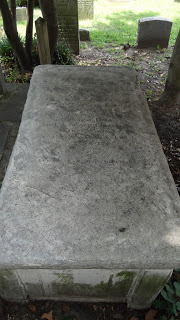
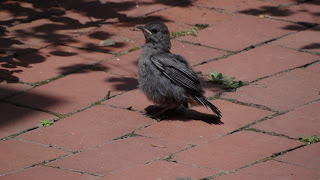
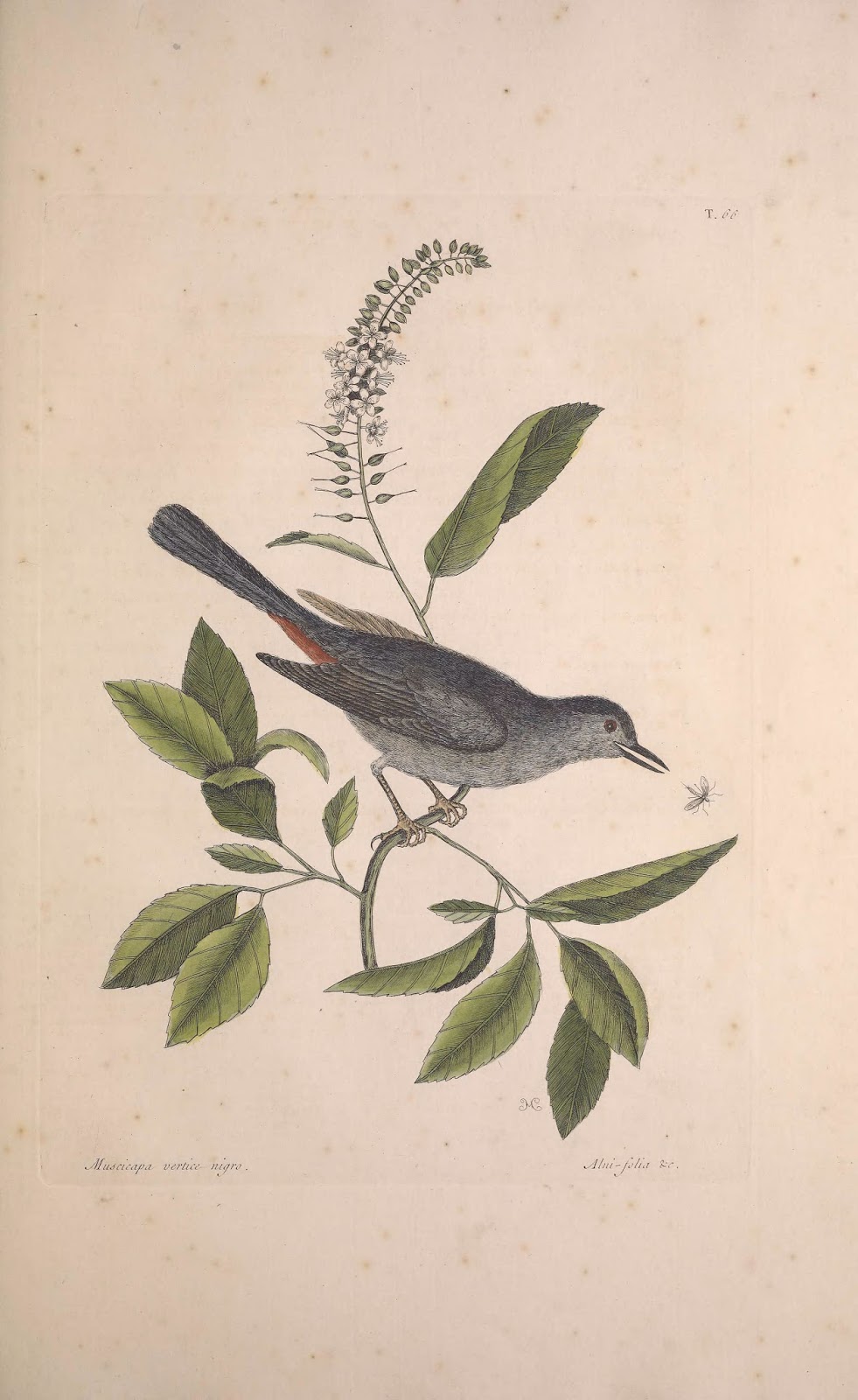


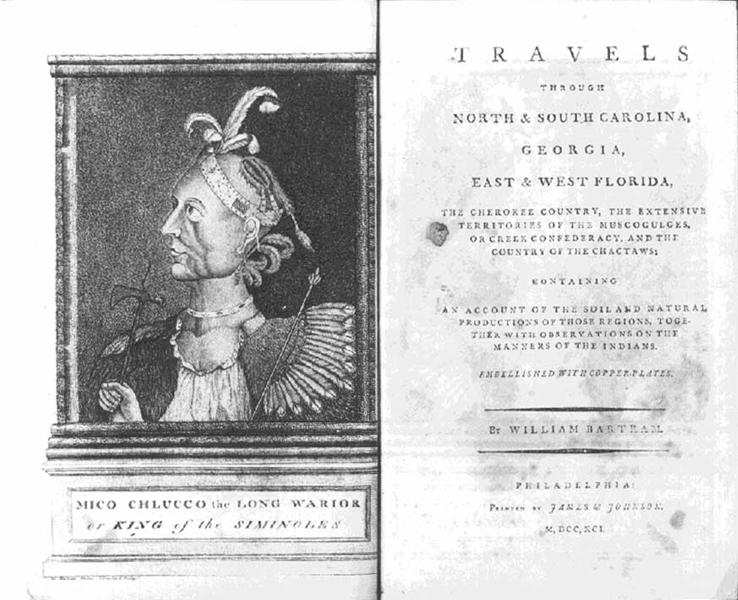

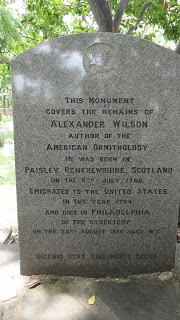
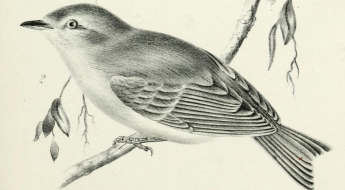


Leave a Comment